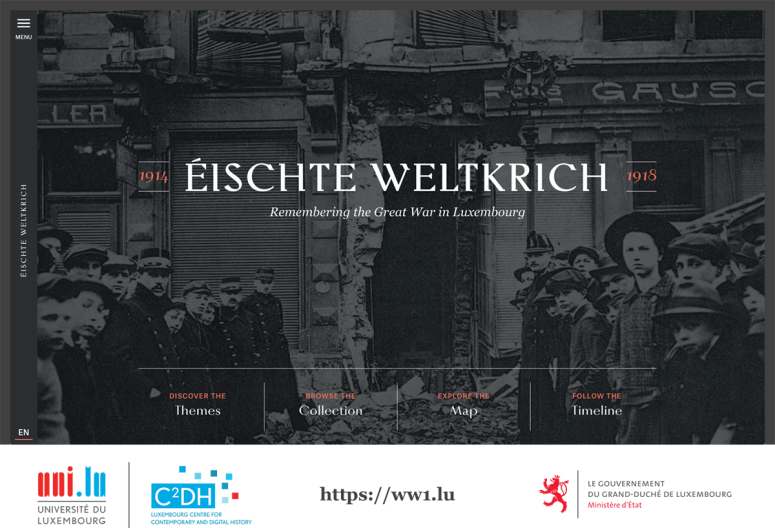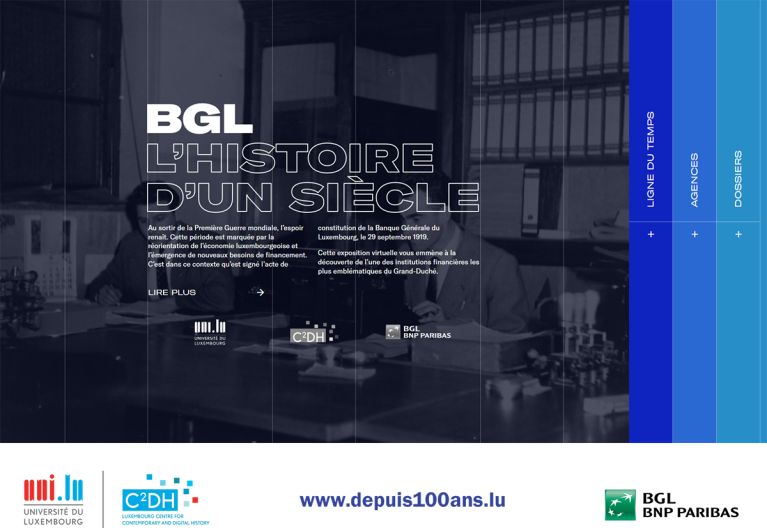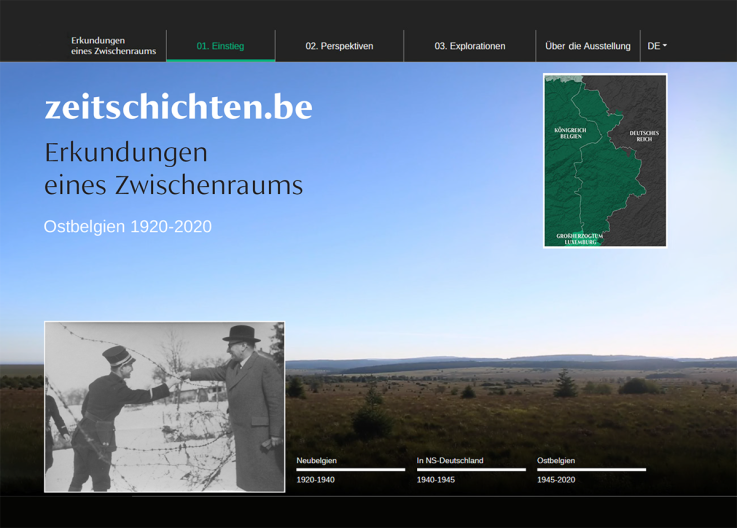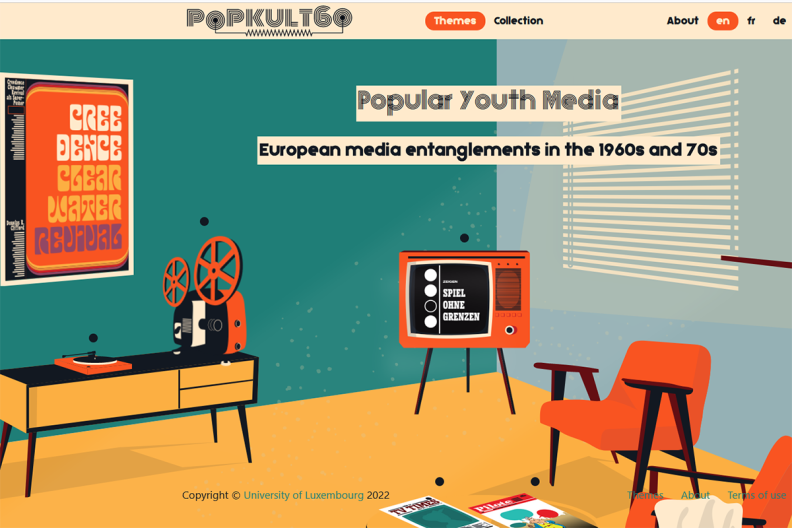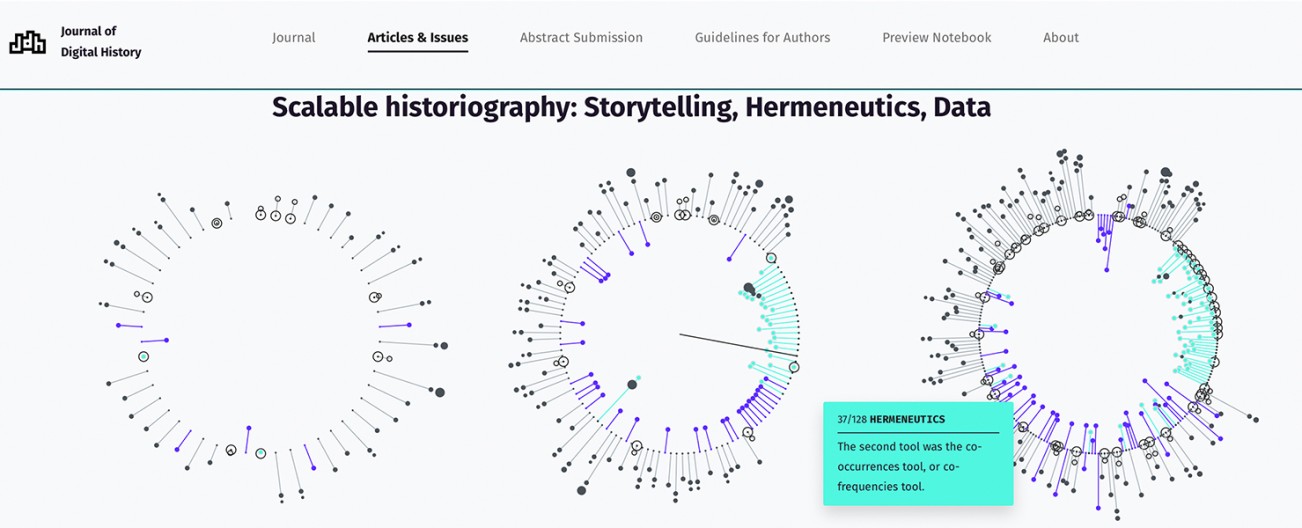With the advent of the digital era, media resources – texts, images, audio and video – have migrated to new platforms such as the internet and social media. Participatory Web 2.0 technologies have radically changed the way in which narrative historical content is being created, shared, experienced and interpreted. Historical stories now unfold across multiple media platforms, and transmedia storytelling challenges historians to experiment with multi-linear and multi-vocal narratives of the past. Historical storytelling has entered the era of data-driven web stories, interactive games and online exhibitions.
From real to virtual: A new visitor experience
The centre has set itself the challenge of exploring new narrative approaches in the field of history. The digital format of online exhibitions involves combining sources or archival document such as photos, historical film footage and audio recordings into a multimedia narrative and enriching it with interactive elements. At the C²DH, we have been experimenting with this new form of digital storytelling in a number of projects aimed at wider audiences.
One such example is the online exhibition on the First World War in Luxembourg. The exhibition gives visitors multiple options to explore this complex past – they can select a specific theme, browse through an interactive timeline, study the rich collection of digitised sources or explore an interactive map. The idea is to enable visitors to access the content from various entry points and continue their journey by choosing a route based on their interests or knowledge. In addition to the virtual exhibition, an interactive mobile game has been developed to engage players in a historical treasure hunt through Luxembourg City, where they can discover sites linked to the lives or memory of Luxembourgers who joined the French Foreign Legion – a great example of how visiting a virtual exhibition can be combined with a physical experience of the past.
The C²DH has produced several online exhibitions on contemporary history – “175 Joër POST: the history of the Luxembourg Post Office”, “BGL, the history of a century”, “100 years of East Belgium” and “Popkult60” – and others are currently in progress.
Digital storytelling as a tool for remembrance
Several projects related to the Second World War in Luxembourg seek to shed light on this contested past and to pay tribute to the victims. In this context, the centre is carefully piecing together the life stories of Holocaust victims: instead of reducing them to the status of victims and names on commemorative monuments, the aim is to put a face to the names, to give them back an identity and a biography, and to show them as active individuals in the communities in which they lived. This initiative will lead to the creation of a Digital Memorial for the Holocaust.
The IWalk project, developed as part of a PhD, identified a hundred sites in Luxembourg and linked them with life stories. With their smartphones, users can watch clips of Holocaust survivors and eyewitnesses telling personal stories about the sites and what they meant for them in their past lives.
An online exhibition about the Second World War that will offer a multimedia, multi-perspective presentation of the occupation and its consequences for Luxembourg society is currently under development.
Research in the transmedia age
Academic publications are also beginning to embrace the potential of transmedia storytelling and data-driven historiography. With the Journal of Digital History, the C²DH has joined forces with the international academic publisher De Gruyter to produce the first open science journal in the field of digital history. The multi-layered design of the journal, combining narrative, hermeneutic and data layers, enables the scalable reading of digital history scholarship in a completely new fashion. Based on a digital hermeneutics approach, the journal promotes transparency and traceability in digital scholarship and hopes to contribute to a new culture that recognises digital scholarship as an interdisciplinary and collaborative effort.



